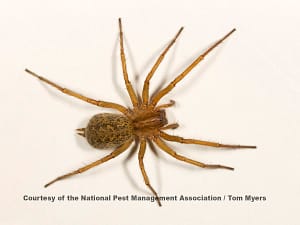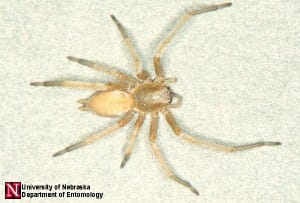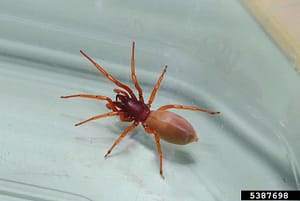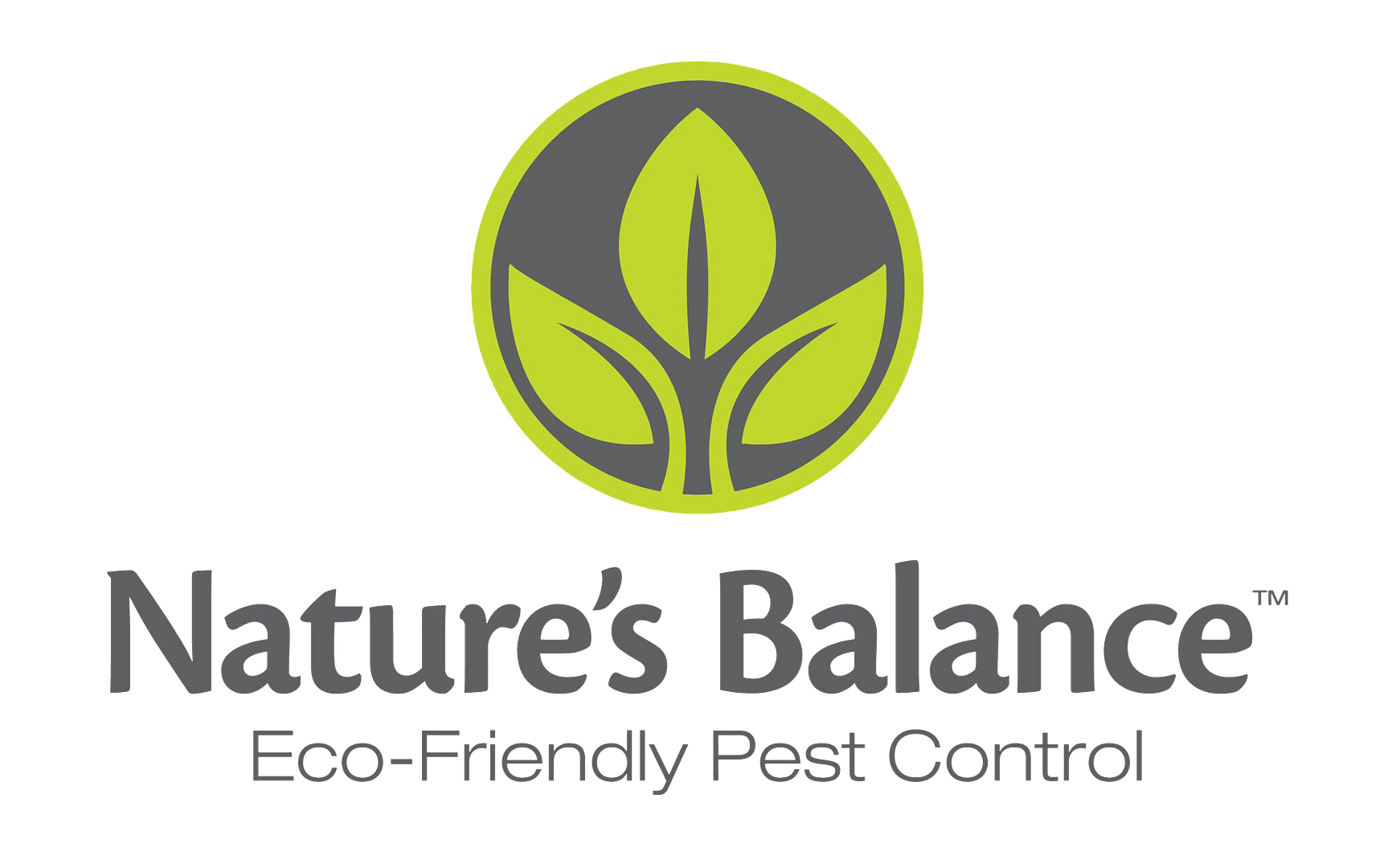Complete Guide to Identifying Utah’s 6 Most Dangerous Spiders
Are you wondering which Utah spiders actually pose a risk to you and your family? While most spiders in Utah are harmless and even beneficial for controlling other pests, there are several species that homeowners should be able to identify and understand. This comprehensive guide covers the venomous spiders Utah residents encounter most commonly, helping you distinguish between dangerous species and harmless look alikes.
The Reality About Spider Danger in Utah
Before diving into specific species, it’s important to understand that the majority of spiders are harmless to humans, and much fear results from the few species that can be dangerous and from many false facts and myths about spiders. In Utah, there are thousands of spider species, but only a handful pose any real risk to humans.
Most Utah spider bites result in nothing more than minor irritation, similar to a mosquito bite. However, knowing how to identify the genuinely dangerous species can help you take appropriate precautions and seek proper medical care when necessary.
Utah’s Most Dangerous Spider: Black Widow
Western Black Widow (Latrodectus hesperus)
Black widow spiders are the most dangerous spiders to humans in Utah, and bites may be fatal to young children or older adults. The Utah black widow spider is actually the western black widow, which is well-established throughout the state.
Identification:
- Size: Female body length 8-10mm, males much smaller
- Color: Females are jet black with a distinctive red hourglass marking on the underside of the abdomen
- Males: Brown with white and yellow markings (rarely bite)
- Web: Irregular, messy-looking webs in dark, undisturbed areas
Habitat and Behavior: Widow spiders are fairly sedentary and spend majority of the time in their webs. Common locations include:
- Garages and storage areas
- Wood piles and outdoor structures
- Rock walls and retaining walls
- Under porches and decks
- Basement window wells
Bite Symptoms: Symptoms include pain, nausea, sweating, swelling, and goosebumps, and in worst cases, fatality. Black widow venom contains latrotoxin, which affects the nervous system, and while bites are rarely fatal, symptoms can be severe.
What to Do: Seek immediate medical attention for any suspected black widow bite, especially for children, elderly individuals, or those with compromised immune systems.
Commonly Misidentified Species
The Brown Recluse Myth
One of the most important facts Utah residents should know: brown recluse spiders do not occur in Utah. Despite this scientific fact, many people continue to believe they’ve encountered brown recluses in Utah. Yellow sac spiders are commonly misidentified as brown recluses due to their similar appearances.
Why the Confusion? Several Utah spiders are commonly mistaken for brown recluses:
- Yellow sac spiders
- Crevice weaver spiders
- Some wolf spider species
- House spiders
Hobo Spiders

Hobo Spider (Eratigena agrestis)
Recent scientific studies have largely debunked the myth that Hobo Spider venom causes significant necrosis in humans. While researchers originally believed Hobo Spiders contained “necrotic” venom, studies within the last 10 years have suggested otherwise.
Identification:
- Size: 7-14mm body length
- Color: Light to medium brown with darker chevron patterns on abdomen
- Legs: Long, hairy legs without banding
- Web: Funnel-shaped webs close to the ground
Other Utah Spiders Worth Knowing
Wolf Spiders
There are several different species of wolf spiders in Utah, and while they can appear intimidating due to their size and speed, they pose minimal risk to humans.
Identification:
- Size: Large, robust spiders up to 25mm
- Eyes: Eight eyes arranged in three rows: four small ones on the bottom row
- Color: Dark brown to gray with various markings
- Behavior: Active hunters, do not build webs
Risk Level: Low – bites may cause temporary pain and swelling but are not dangerous.
Yellow Sac Spiders

Identification:
- Size: 5-10mm body length
- Color: Pale yellow to light tan bodies with slightly darker heads
- Behavior: Nocturnal hunters, build small silk retreats
Risk Level: Low to moderate – bites can cause mild pain, itching, and swelling but are not dangerous.
Wood Louse Spiders (Dysdera crocata)

Adult wood louse spiders have females with a body length of 11–15 mm, males 9–10 mm. They have six eyes, a tawny orange to dark-red cephalothorax and legs, and a shiny pale beige to yellow-brown abdomen.
Identification:
- Size: 9-15mm body length
- Color: Distinctive reddish head and legs with a large, pinkish-grey abdomen
- Fangs: Prominent, disproportionately large chelicerae (jaws)
Behavior and Habitat: Wood louse spiders prey primarily upon woodlice, also known as sowbugs, pillbugs, or roly-polies. They’re nocturnal hunters found in:
- Basements and crawl spaces
- Under rocks and logs
- Areas where woodlice are common
- Damp, dark locations
Risk Level: Low to moderate – Their large fangs can deliver a more noticeable bite than smaller spiders, potentially causing temporary pain and swelling, but they are not dangerous to humans.
Spider Prevention Strategies
Exterior Prevention:
- Seal entry points: Caulk cracks around windows, doors, and foundations
- Remove debris: Clear wood piles, leaves, and clutter from around your home’s perimeter
- Trim vegetation: Keep bushes and trees away from exterior walls
- Exterior lighting: Use yellow or sodium vapor lights that attract fewer insects
Interior Prevention:
- Regular cleaning: Vacuum corners, basements, and storage areas regularly
- Reduce clutter: Minimize storage in basements and garages
- Moisture control: Address humidity issues and water leaks
- Professional treatment: Consider professional pest control for persistent problems
While these DIY prevention tips help reduce spider activity, sometimes professional treatment is necessary. Learn about our eco-friendly spider control services
Seasonal Spider Activity Utah
Spring (March-May):
- Increased activity as spiders emerge from winter hiding spots
- Mating season begins for many species
- Time to inspect and seal entry points
Summer (June-August):
- Peak activity for most species
- Outdoor species may seek shade in homes during extreme heat
- Regular cleaning and prevention most important
Fall (September-November):
- Many species seek winter shelter indoors
- Black widow activity may increase as they prepare for winter
- Prime time for professional spider control treatments
Winter (December-February):
- Reduced activity but indoor species remain active
- Focus on preventing warm hiding spots
Dealing with dangerous spiders in your home? Nature’s Balance provides comprehensive spider control services throughout Northern Utah. Our experienced specialists can accurately identify species and provide targeted, eco-friendly treatments.
Frequently Asked Questions about Spiders in Utah
Q: Are brown recluse spiders found in Utah?
A: No, despite common misconceptions, brown recluse spiders do not naturally occur in Utah. Yellow sac spiders and other species are often mistaken for them due to similar coloring.
Q: When are spiders most active in Utah?
A: Peak spider activity occurs during summer months (June-August), with many species seeking indoor shelter in fall (September-November) as they prepare for winter.
Q: How dangerous are hobo spider bites really?
A: Recent scientific research has largely debunked earlier claims about hobo spider venom causing significant tissue damage. While bites may cause temporary discomfort, they are not considered medically dangerous.
Q: How can I tell if a spider is dangerous?
A: Key identifiers include the black widow’s distinctive red hourglass marking on a shiny black body. If you’re uncertain about a spider’s identity, take a photo from a safe distance text it to us at 435-709-1708 for an accurate identification rather than risking close contact.
Utah Pest Control Excellence
Nature’s Balance provides comprehensive spider control services throughout Summit, Wasatch, Salt Lake, and Utah counties. Our experienced specialists understand Utah’s unique spider species and seasonal patterns, offering:
Professional Services:
- Accurate spider identification and risk assessment
- Customized treatment plans based on specific species present
- Eco-friendly control methods safe for families and pets
- Prevention strategies to reduce future spider problems
- Follow-up services to ensure long-term effectiveness
Don’t let fear of spiders control your comfort in your own home. Contact Nature’s Balance today. Our professional specialists provide the expertise and peace of mind you need to confidently address any spider concerns in your Utah home.





